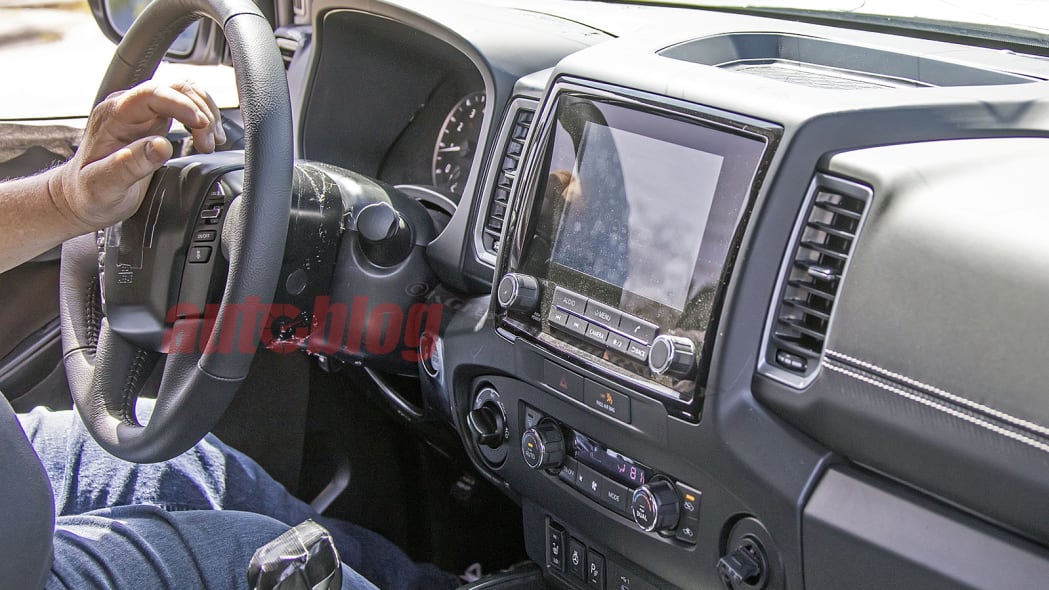Nissan’s next-generation Frontier is inching closer to production, and these spy photos show off the one thing we’ve yet to really learn about the new truck: its interior. While it’s clear that Nissan put some effort into disguising many of the interior elements, it wasn’t quite enough.
Many of the details are still obscured and the panel fitment is definitely preproduction, but we can see more than enough to appreciate what Nissan has in store for the cabin of its overhauled pickup. Let’s start with the wheel, which no longer looks like a junkyard pull from a totaled Versa, and then the infotainment screen, which was clearly designed alongside the dash opening, rather than as an afterthought. It doesn’t look particularly large in these photos — probably around 8″ or 9″ diagonal, tops — but it’s a far cry from what we’re used to in the outgoing Frontier.
Elsewhere, we can see that the materials have pretty much universally been upgraded. There’s even some contrast stitching on the passenger-side dashboard above the glove box. The HVAC controls have been consolidated somewhat, and beneath them we see two USB ports (one classic; one Type-C), a toggle for the truck’s parking sensors, and switches for a heated steering wheel and heated seats, indicating that this represents a fairly well-equipped model.
That said, from what we can see of the gauge cluster, it appears Nissan is sticking to analogue readouts, likely with a digital information screen tucked between them. There’s also plenty of space for a larger screen based on the amount of real estate left in the bezel, so it’s possible there’s some room left to explore above the equipment level of this prototype.
There’s a lot more to the new Frontier than an interior upgrade, and fortunately we’ve already had the opportunity to sample its powertrain. The 3.8-liter V6 makes 310 horsepower, which is 49 more than the old 4.0-liter and 158 more than the discontinued four-cylinder base engine. That output will also make it the most powerful midsize truck in the segment. Its 281 pound-feet of torque is unchanged, but that’s still more than what you get from the V6s in the Chevy Colorado or Toyota Tacoma.
Only the diesel Colorado and the Ford Ranger’s turbo four-cylinder top the Nissan’s torque rating. In the current body, this is good enough for a combined fuel economy of 20 mpg with RWD and 19 mpg with 4WD, improving upon its 4.0-liter predecessor by 1 and 2 mpg, respectively. Credit goes to the lighter, more efficient engine and the additional gear ratios, however, fuel economy is still dead last in the segment among similar automatic V6 RWD trucks. The 4WD ties the V6 Gladiator and Colorado, and tops the Colorado ZR2 with a V6. We expect those numbers to improve once Nissan can combine the new running gear with the 2021 model’s updated, likely sleeker body.






